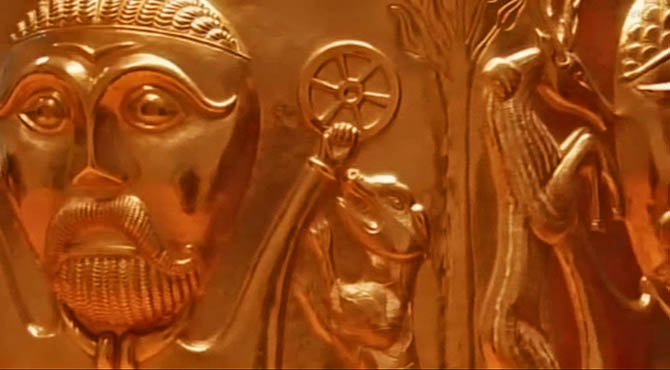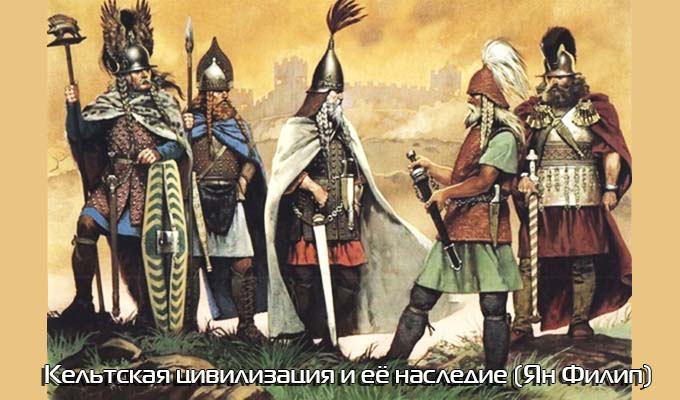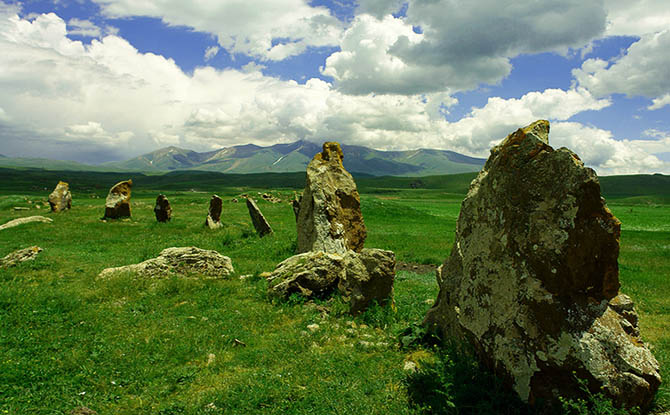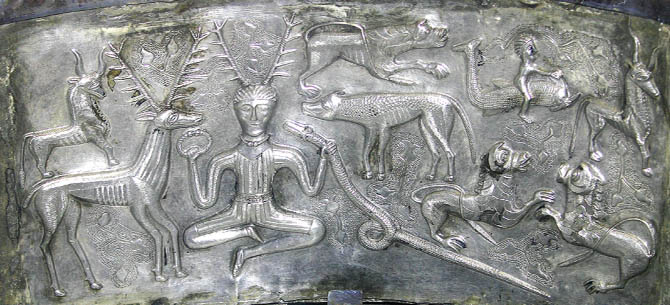
Originally religious representations were very close link of all Celtic society and as Caesar reports, the people were very betrayed in Gallia by religion As well as all people, Celts kept since ancient times some magic ceremonies and rituals by means of which they tried to get an arrangement of different divine forces It is impossible to assume however at them existence of accurate belief in sense of later world religions, the devil in myths, a stump is a lot of and in sacred terminology is a remnant and heritage of more ancient times. Not so it is not enough sources for acquaintance with the Celtic religion, but they seldom are credible. Messages of ancient writers, monuments with inscriptions of the Gallic-Roman times, most often Latin or Greek which contain at least a name of any local god, further philological researches about value of some words concern to them, legends and old Irish and therefore interpretatio romana (the Roman interpretation) not always correctly lights the Celtic religion. Partly it belongs also to Caesar’s messages. It is difficult for stranger to understand all subtleties of a cult and various ceremonies correctly as he did not get used to others environment, and it is even more difficult for the person of the 20th century with absolutely otherwise than thinking and different views on essence of their religion. At such situation it is very difficult to reach a being of the Celtic mythology. It seems, however, that the Celtic particularism prospered both in political life, and in religion, that is originally each tribe had local gods and cults in which we only in very common features can assume existence of general idea about some highest deities which are variously called by certain tribes. Therefore it was so easy to connect names of local gods with names of gods Roman – Mercury, Mars and others. Quite it is even possible that various attributes and functions were attributed to the same deity in two remote areas. Not clear general idea about such beings, apparently, was, and those who speak about the Celtic pantheon in which breeding deities represented themselves only various options caused by the place and time rely on it. It is necessary to remember however that Celts came to contact with ancient local population (especially in Central Europe), with its own world of religious representations that at longer coexistence could exert impact on the Celtic representations. At the introduction in hand-written history Celts already passed development of initial totemistichesky representations, but some remnants and their echoes after all remained. Instead of initial patrimonial totems we find heroes of a sort or the tribe. Between original gods and heroes in the Celtic religion there is no clear and certain border. Heroes are not supernatural beings; they really lived as people and only after idea of these people united to ideas of the highest beings. Gods live in the Irish legends as people, and people pass into the world of gods. God and the person under certain conditions are considerably combined. Apparently, the reality is answered most of all by idea of breeding gods. Approximately as in Ireland there was Dagda the father of a sort and its patron, were and other male gods are very closely connected with certain tribes. Special gods of the Sun and war, it was not probable; such functions connected only to various breeding gods. Exact specialization and a certain sphere of gods are peculiar rather only to the Mediterranean and meet more often in an urban environment, and it was absolutely alien to primordial Celts or was adopted by them only in addition. We can explain these large number of names of the Celtic gods which competences often intertwine. Very difficult symbolics of the Celtic representations prevents us to penetrate into the essence. In this symbolics as it was already specified, took the important place, except other, both on islands, and on the continent, a cult kettle. In Ireland the magic kettle was a symbol of abundance and immortality and often was located on the sacred place or in the building. At the celebrations known under the name a gobniya, in a copper magic beer for food and a reinforcement of deities cooked. Some deities as the most important, are mentioned to a Romanization of Gallia. According to Caesar, the patron of roads and merchants (approximately as the Roman Mercury) and the patron of arts, equipment and crafts was the highest god of Gallia; in Ireland the Meadow was also a patron of all arts of Special gods of the sun or war probably was not; such functions connected only to various breeding gods. Exact specialization and a certain sphere of gods are peculiar rather to a Mediterranean and meet more often in an urban environment, and it was absolutely alien to primordial Celts or was adopted by them only in addition. We can explain these large number of names of the Celtic gods, Komi of military valors, and as we already saw, Lugdunum in Gallia got great value. God Taranis is considered as the lord of heaven; in Gallic language since ancient times this concept contacted wheel symbolics. On an internal plate of a gundestrupsky kettle we see the image of god or hero with the raised hands who touches the right hand a wheel. However, small bronze castors suspension brackets of similar character represent usual stock in the Celtic oppiduma, at us, for example, in Stradonitsakh, and are represented also on the Celtic coins. God with a wheel appears on uncountable Gallic monuments later and is compared to the Roman Jupiter. Sometimes he holds in hand a wheel, sometimes a lightning (in Celtic, the ram”, a thunder), but a wheel in religious representations symbolizes also the sun. Poet Lukan (1st century AD) calls only three Celtic gods – Tevtates, Ezus and Taranis. But also these deities are defined not absolutely clearly and were not widespread everywhere. According to comments to this text, Taranis, allegedly, was pacified by burning of the victim, Tevtates – its drowning (lowering in a tub), and Ezus – hanging; the last is especially important for concept of sanctity of trees. Tevtates is described by Caesar as the god of war. His name comes from the Celtic word designating the tribe, and in the Roman understanding it is assimilated to the god of war to Mars, and sometimes to Mercury. Originally probably it was the local deity protecting the people and during war; it is necessary to remind again that the Celtic tribe and in a wartime made independent education even at joint actions of many tribes. Ezus appears later, is frequent in an image of Mars or Mercury. Lukan divides these old Celtic deities into two groups. One of them Ezus and Tevtates (Mars, Mercury) make, the second Taranis – a combination of images of Jupiter and Dispater, the father Dit (dis pater which Gauls considered the ancestor, referring to the doctrine of druids); later this god was identified with Pluto, god of an underground kingdom, but these names are too not clear that they could not be a name any of breeding gods. In Provence, prireynsky areas and in Ireland also female goddesses were esteemed, in Ireland even male gods submitted to these goddesses. The cult of fertility, fertility and an underground kingdom was dominating here. However, the cult of mother earth was known in Europe in the ancient time already in the late Stone Age, and female goddesses are considered as generation of more ancient matriarchal society which echoes remained in consciousness of the people very long. Obviously to the same ancient origin also honoring of a Trinity of the goddesses-mothers (matrea, matronae) represented more often in a sitting position with attributes of fertility and fertility is. This Trinity was esteemed at trainers and in other places, and sometimes instead of a Trinity also one woman meets. In a so-called pose of Buddha (sedentary) we got acquainted with the image of gods in the Southern and Central France. The Makroby, late antique writer, considers this sedentary pose characteristic of gods of abundance and fertility (attributes: a bag, a wing, a basket with fruits, etc.) . Often god holds in hand a snake with a blockhead or Gallic cervical hryvnia (Gundestrup). Thus, functions of different gods often intertwined. At a Romanization of the Celtic religious representations attempts to make a choice мнимо the standardized divine representatives became, but names were actually replaced and it is frequent, violently or incidentally, they were united with some Roman deities. Therefore it is very difficult to understand numerous gods who are mentioned in the Gallic environment: Albiorix – the tsar of the world, Manopos – the great young man, Tontioris – the lord of the tribe, Katuriks – the tsar of fights, Ogmios – the attendant deceased with a staff and onions, etc. Edui read god represented with a hammer and a staff is frequent together with the goddess accompanying it. Sources give about 400 names or nicknames of gods and goddesses. In Pyrenean areas, in Britain and in Norike there are numerous inscriptions dedications (dedikation); names are given in the majority of them only once, and the image of their attributes is very different. Most often these attributes remind Mars or Mercury, is more rare Apollo, Silvanus or Minerva. The iconography of separate deities was not precisely developed, attributes of certain gods often coincide. Only some deities, apparently, enjoyed bigger popularity. God a deer meets in Central Gallia, god snakes in the east. Belenus was esteemed in Gallia, in northern Italy and in Norike; the goddess of horses Epona – in the called countries, in Britain and in keltoibsriysky area. Sometimes deities are represented in couple, god and the corresponding goddess – Sutsellus and Nantosuelta in Gallia, Vidasus and Tiana in Pannoniya, etc. But the Trinity is especially typical for the Celtic environment. We got acquainted already with a Trinity of mothers, but also god meets three heads or three persons (the relief image of three-headed god in the field of Reims, three-headed god on a vessel in Bave), also a bull the Trinity of animals or figures possessing ability to treble, etc. meet three horns (tarvos trigarnoa). Celts considered number “tri” as a symbol of force and perfection, three-headed god was the most powerful. The divine bull of Deyotaros is known in galatsky area of Asia Minor, in symbolics the raven, a pigeon, a ram, a bull and other animals meet. Gallic god Tsernunnos is represented with cervine horns, above we already spoke about god with a wild boar as attribute. In scientific literature the opinion is sometimes expressed that the deities connected with certain animals originally had shape of these animals (a sacred animal of the tribe, a totem) and that later when gods gained more certain human lines, these animals became only their attributes. So far, however, only images of gods with the specified attributes which in most cases belong already to later time are known. A large number of small bronze, and also clay figures in the Gallic-Roman temples demonstrates votivny gifts of the Celtic people and his belief which lived a long time during the Roman era. The magic power protecting from an evil eye, plague and other dangers was attributed to certain objects or signs. In Christian time such signs were on walls Mr. Clermont – they protected the population from plague. A role of druids in the Celtic society we mentioned in other communication, as well as bards singers. “Eukhag” were, apparently, priests and prophets; further are brought “vates” which role is not absolutely clear. In the Irish legends descriptions of very difficult ritual ceremonies remained. The young king entering on a throne was considered as the mortal spouse of the local goddess and married her symbolical presentation of a bowl. He met this goddess in an image of the beautiful girl at a well or a source. When the king grew old, the goddess also turned from the beautiful girl into the old woman. It is interesting that in these legends also comic character appears in short clothes with a big staff which was carried sometimes on wheels, with a magic copper of inexhaustibility, rejuvenation and inspiration. Therefore the fact that small bronze figures of men with a staff or with a similar subject in pozdnelatensky time are not a rarity is very important and that we find them also in Czech to Gradishte’s oppiduma at Stradonits. In Gallia the similar type is presented in god’s form with a hammer and a bowl or a bowl (Sutsellus). Zhiraldus Kambrenzis, the author of topography of Ireland of the period about 1185, with indignation describes very archaic ceremony at the introduction on a throne of kings of Ulster. The king had to impregnate publicly a mare who then was killed, cooked in water, in this water the king bathed, and then together with the people ate meat. This barbarous ceremony probably very ancient origin as similar horse sacrifices are known to us and in other parts of the world, for example, in India. The Celtic calendar estimated time at night and was based on supervision over the moon. Year was divided into two main periods, warm and cold. The end old and the beginning of new year in Ireland (samain) was celebrated near on November 1 when the cattle was driven from pastures and gathered in one place. On the eve of a samain magic forces were released, magic troops left caves and hills. The beginning of the warm period, the beltena” (the Celtic word meaning fire) or “ketshameyen”, according to Powell was the second important holiday (this name, perhaps, can be put in communication with continental god Belenus). It was celebrated near on May 1 when the cattle was expelled on the general pastures; there was a custom to light big fires between which carried out cattle that had to protect it from all diseases. In Ireland there were also other seasonal holidays – to the imbola at the beginning of February, it is possible in connection with cultivation of sheep, and lugnasad near on August 1, apparently for the sake of providing a good harvest; this last name has something in common with a name of god Lug and Lugdun (present Lyon) which once was the main town three Gallium. At will of the emperor Augustus in 10 g BC the holiday near on August 1, as well as in Ireland was celebrated there, and Lug thereby was made in gods of all Gauls in a parallel to the Roman Mercury.




Leave a Reply